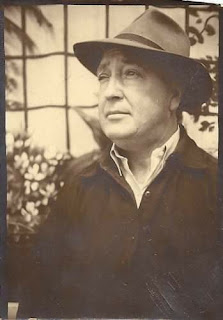As the summer of 1937 was coming to an end, a large assembly of visitors descended upon the East Dublin community. They were there to visit as they had in the past. They were not your ordinary band of church revival and camp ground attendees. Originally called gypsies, the tourists drew the ire of some East Dublin residents who went to court to
drive them out of their neighborhood.
F.M. Aiken hired E. S. Baldwin, Jr. to file a motion to Dublin Judicial Circuit Judge J.W. Kent to immediately remove the threatening hoard from the area.
Baldwin presented his case late on the afternoon of September 9, 1937 before Judge
Kent, who temporarily granted an injunction against the 150-200 persons from conducting
a larger anticipated gathering of a hoard, long condemned as nothing more than tramps and
thieves.
Baldwin further pleaded to Judge Kent that the gypsies were endangering themselves as there were no proper sanitary conditions in the copse of trees, near Braddy’s store and most likely located on Highway 80 on the future site of Tanner’s Motel where the road bends toward Dublin. In the same breath, Baldwin argued that the miscreants were engaged in lewd and embarrassing activities. Judge Kent issued a temporary restraining order until a hearing on a permanent injunction could be held on September 24.
Judge J.E. Page reported that a small band of the gypsies were reported to be roaming through the New Evergreen district. Page characterized the visitors as “fortune tellers” and “fixers of stoves and just about everything,” who were causing quite a commotion among the area’s residents.
On the other hand, East Dublin merchant and large property owner, J.T. Braddy welcomed the visitors. Braddy noted that because of the stories published in the Courier Herald and the rampant rumors flying through the city, throngs of curiosity seekers had crossed the bridge and visited his store while they were looking to see what all the commotion was about.
B.B. Tanner, Jr., explained that the Indians were a “quiet and well behaved” lot. As to the lack of sanitary conditions, Tanner compared his property as good as any where sewers were unavailable. He confirmed Braddy’s reports of hundreds of local persons filling the highway to get a glimpse of the Indians and their colorful costumes. Many residents visited with the wayfarers to learn more about their ways.
The hearing on the permanent injunction to remove the gypsies was scheduled to be heard on Friday morning, September 24. Judge Kent announced that the plaintiff Aiken had surprisingly dismissed his case. Over the previous two weeks, locals began to realize that the gypsies were not gypsies at all, but possibly descendants of the Native Americans who occupied this area for thousands of years before.
Turns out that the Indians were members of the Mitchell Tribe. The tribe frequently
traveled around the country on excursions financed by the revenues from their oil lands in
Oklahoma. Tribal members, now driving nice automobiles, had been coming to Dublin for
43 years while riding in wagons and upon horseback.
James B. Hicks and local amateur historian D.T. Cowart joined the leader of the Indians, Chief Tokoya, for a trip north of East Dublin to Hicks’ property, which encompassed Carr’s Shoals, an ancient Indian village located on the point where the lower Uchee Indian trail crossed the Oconee River.
As the trio was traveling to the site, they noticed a local man stooping over and complaining of rheumatism. The chief chided the man for drinking. “He drink too much
liquor when he was young,” the chief exclaimed.
The 86-year-old chief knew of what he spoke. “Me straight. Me no drink,” added the
chief, who was remarkably strong and fit for his age.
Upon their arrival at Carr’s Shoals, the trio surveyed the elevated land, which had been known since the 1700s as Carr’s Bluff. At the time, the leading historians and archaeologists of the day were firm in their belief that the location was the point where
Spanish explorer Hernando de Soto and his army crossed the Oconee River on their route
from the future sites of Hawkinsville and Augusta.
Hicks and Cowart pointed out man-made marks on some of the ancient trees on the
bluff. Chief Tokoya confirmed that the marks could be as old as two centuries. The chief’s
assertions could be true as the last Native Americans in the area had vacated our area in the early 1800s.
By following marks on the trees, Chief Tokoya located a theretofore unknown, bountiful spring, which had gone unnoticed by Hicks and a farm hand long familiar with the ancient Native American site.
And now, just as the cooler winds of autumn whirl once again, the September days of eight decades ago when Native Americans, not the gypsies, returned to visit the lands of
their forefathers are no longer a forgotten piece of our past.



Comments